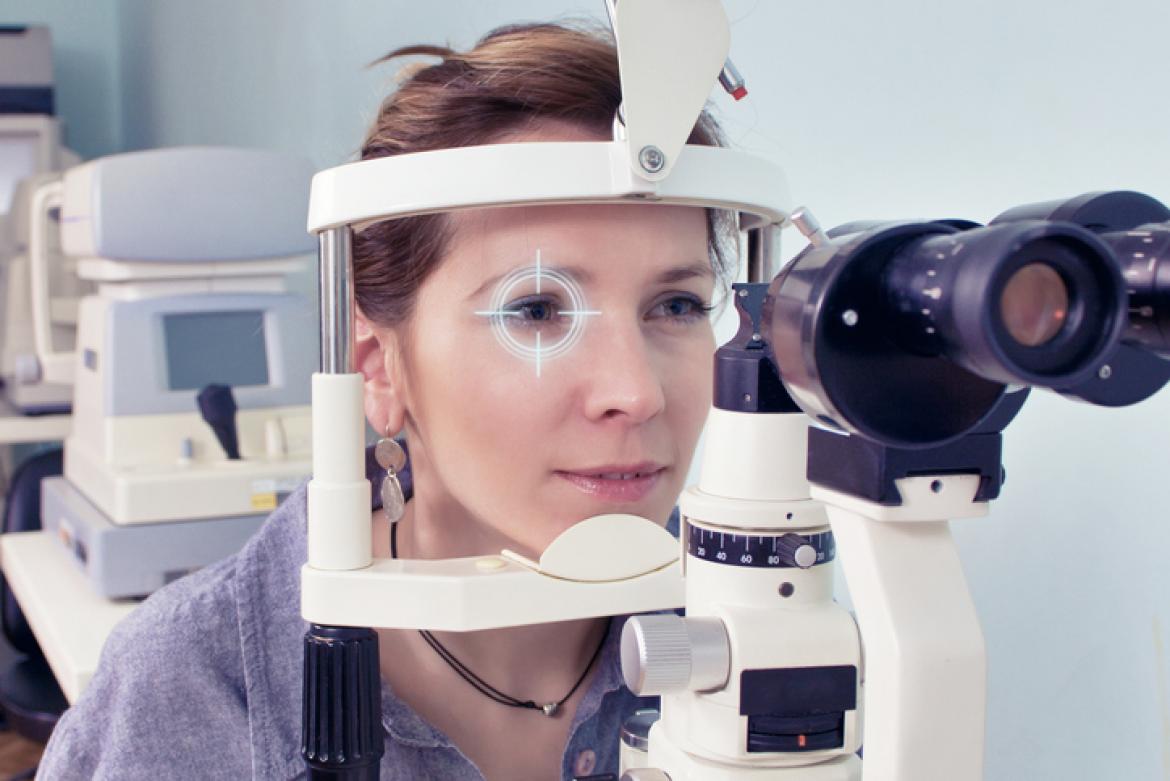What’s the difference between a cataract and glaucoma?

The eye is a complicated (but brilliantly designed) organ. With so many different parts of the eye, comes several problems or eye diseases you can get. Cataracts and glaucoma are two common eye conditions which we will go into more detail below.
Cataracts
The lens sits just behind the iris and serves to focus light onto the retina, allowing us to see. When we are born, the eye is completely clear. As we age, the lens can slowly degrade and become cloudy and brown in colour, diminishing the quality of the light it lets in.
A cataract is a clouding or loss of transparency in the eye’s natural lens. The lens is composed of proteins called crystallins. When young and healthy, these proteins keep the lens clear; with age, the proteins break down and clump together, causing the lens to lose clarity and a cataract to form.
Cataracts degrade vision and cause images to appear fuzzy, cloudy or blurry, like looking through a dirty window. Cataracts are the major cause of blindness among people over 55 years.
Cataracts generally develop gradually, as part of normal ageing, but may occur in younger individuals due to taking certain medications (like steroids), smoking, diabetes, excessive alcohol drinking or eye trauma. Cataracts can also be caused by some types of eye surgery. Rarely babies can be born with congenital cataracts.
When a cataract becomes bad enough, and the vision starts to interfere with daily function and a person’s quality of life, it can be removed surgically and replaced with a clear, artificial lens.
Normal, healthy clear lens, allowing clear vision.
Cataract, obscuring the light that enters the eye, and clouding vision.
A cataract can be replaced with an artificial lens to improve vision.
Glaucoma
Glaucoma is very different from a cataract. Glaucoma occurs when the pressure in the eye damages the nerve that connects the eye to the brain, the optic nerve, resulting in reduced peripheral vision.
What is eye pressure?
Think of the eye like a soccer ball. If you pump up a soccer ball, it becomes extra firm with high pressure. Let all the air out, and the ball gets softer with the walls sunk in. Like the ball, the eye’s pressure can vary, depending on how easily fluid made within the eye is allowed to drain. If drainage is obstructed, the pressure on your eye can rise.
The optic nerve is the nerve at the back of the eye that connects the eye to the brain. Without it, the brain cannot register what the eye is seeing. This nerve is quite sensitive to raised pressure, which can damage it. The damage is slow, painless, and does not affect one’s vision until very late in the disease’s course. Pressure-related damage is progressive and irreversible, and cannot be repaired.
Unlike cataracts, glaucoma cannot be cured, but it can be effectively managed over time. Control of eye pressure, either through daily eye drops, gentle laser or glaucoma surgery, can halt the progress of glaucoma and preserve one’s vision for life. Early detection and meticulous monitoring of the optic nerve over time are the keys to good management of glaucoma.
What does a cataract look like?
A cataract is cloudiness, or opacity, of the normal human lens. The lens sits behind the iris and focuses light onto the retina, allowing us to see. For most of our lives, the lens is clear. However, age and certain diseases (e.g. diabetes) can cause it to become cloudy over time. This is a cataract.
When a cataract becomes bad enough, and the vision starts to interfere with daily function and a person’s quality of life, it can be removed surgically and replaced with a clear, artificial lens.
There are different types of cataract, depending on where in the lens the cloudiness (opacity) is found. These types often occur in combination.
1. Nuclear cataract
A nuclear cataract is an opacity throughout the whole body of the lens. This can cause yellowing/brown discolouration of the vision, and a generalised decline in the quality of the vision. If no other form of cataract is associated, nuclear cataracts may not obscure vision until they are quite developed.
2. Cortical cataract
Like spokes of a wheel, cortical cataracts are found close to the outside edges of a cataract, at the front or back surface. These often cause increased scattering of light, causing the symptoms of glare in sunlight, or difficulty driving at night due to bothersome oncoming headlights.
3. Posterior subcapsular cataract (PSC)
This particular kind of cataract is found at the very back of the lens, at the centre. While small, this cataract is placed at the visually most important part of the lens, the nodal point, through which all light rays pass.
Because of their position on the lens, PSC cataracts are visually disturbing from early on and can progress more quickly than other cataract forms. They are found more commonly in diabetics and people who are short-sighted.
Normal, healthy clear lens, allowing clear vision.
Cataract, obscuring the light that enters the eye, and clouding vision.
A cataract can be replaced with an artificial lens to improve vision.
Cataract surgery involves the removal of the old, cloudy lens, and replacement with an artificial lens that is well tolerated by the eye.